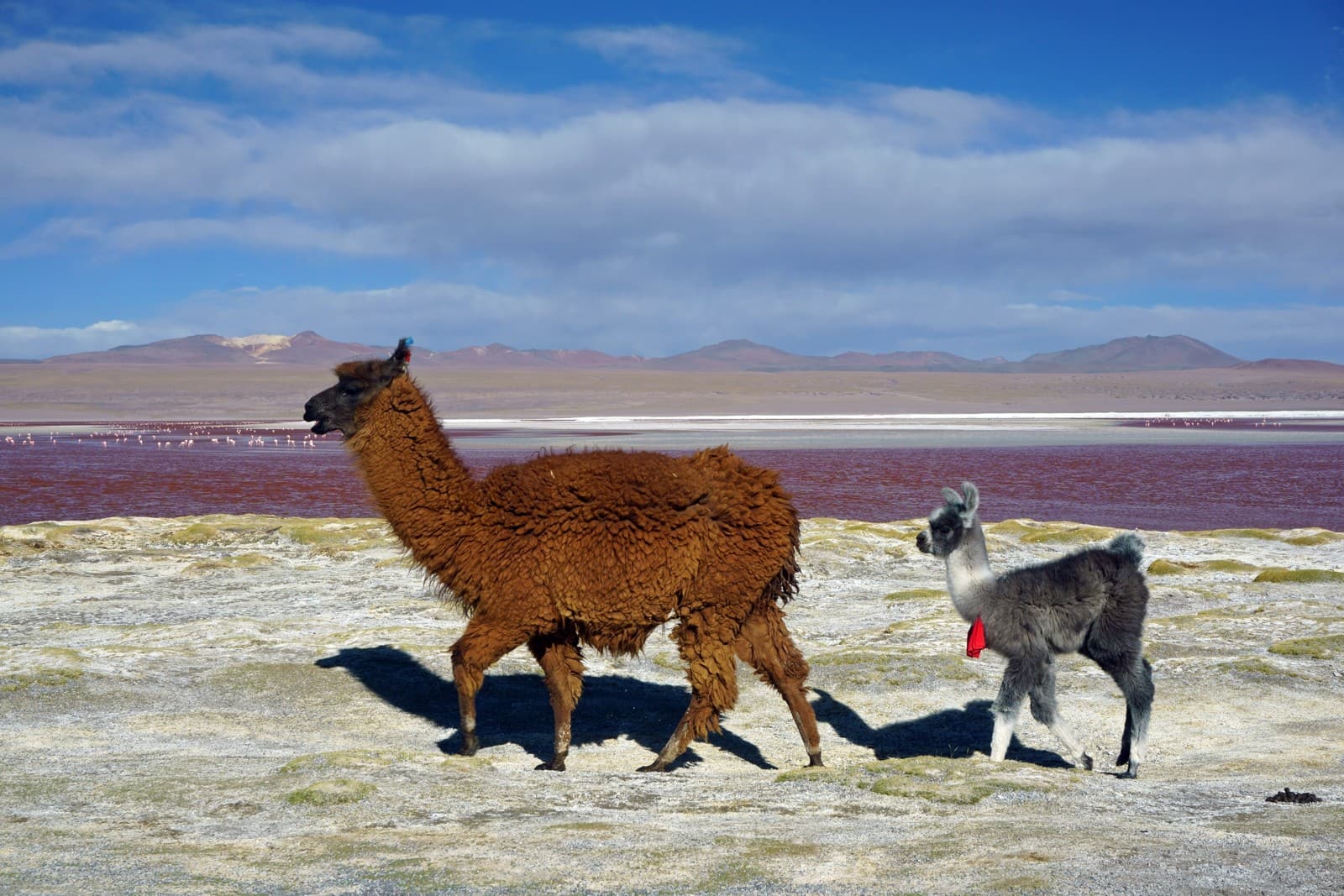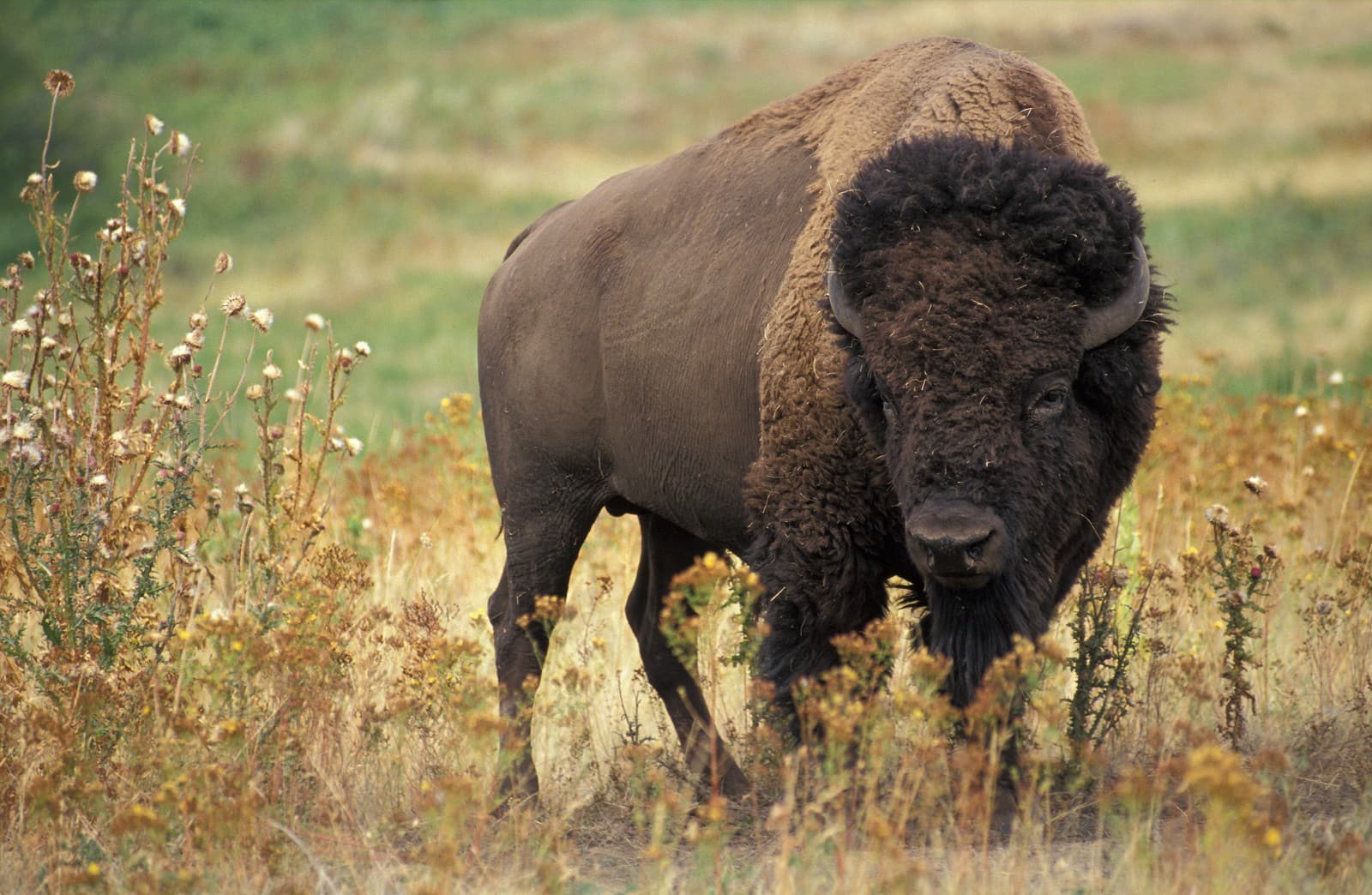Camel vs Llama: A Complete Comparison
When comparing camels vs llamas, these remarkable camelids showcase distinct adaptations shaped by their native environments. While camels tower at heights up to 7.5 feet (2.3 meters) and can weigh up to 1,500 pounds (680 kg), llamas are notably smaller, reaching 6 feet (1.8 meters) and weighing between 280-450 pounds (127-204 kg).
These differences reflect their evolutionary paths: camels evolved for harsh desert conditions, developing their iconic humps for fat storage, while llamas adapted to high-altitude Andean environments, developing more efficient oxygen processing capabilities and sure-footed agility.

© Jjron / CC BY-SA 3.0
The dromedary camel exemplifies desert adaptation with its prominent single hump, which can store up to 80 pounds (36 kg) of fat, enabling survival in harsh arid environments for weeks without food.

© kallerna / CC BY-SA 4.0
Llamas showcase their mountain heritage with thick wool and compact bodies, perfectly adapted to life in the high-altitude Andes where they thrive at elevations up to 13,000 feet (4,000 meters).
Key Physical Differences: Camel vs Llama
| Feature | Camel | Llama |
|---|---|---|
| Height | 7.5 feet (2.3 m) | 5.5-6 feet (1.7-1.8 m) |
| Weight | 880-1,500 lbs (400-680 kg) | 280-450 lbs (127-204 kg) |
| Distinctive Features | Humps (1 or 2) | No humps, woolly coat |
| Ears | Short, rounded | Long, banana-shaped |
| Foot Structure | Wide, padded | Split, with two toes |
| Lifespan | 40-50 years | 15-25 years |
Habitat and Distribution
Camel Territories
Camels thrive in desert environments across North Africa and Central Asia, with feral populations in Australia. They can withstand extreme temperatures from -40°F to 104°F (-40°C to 40°C) and survive without water for up to two weeks.
Llama Range
Llamas inhabit the high Andes Mountains of South America, primarily in Peru, Bolivia, and Chile. They excel in elevations between 7,500 and 13,000 feet (2,300-4,000 meters), where oxygen levels are significantly lower than at sea level.
Behavioral Differences
Social Structure
Camels typically live in herds of 20-30 individuals, with a dominant male leading the group. During breeding season, males become territorial and may display aggressive behavior.
Llamas, conversely, maintain smaller family groups of 4-12 animals. They’re known for their strong social bonds and hierarchical structure, often using their characteristic spitting behavior to establish dominance.
Working Capabilities
Camel Uses
- Can carry up to 990 pounds (450 kg)
- Travel 25 miles (40 km) per day with cargo
- Excellent endurance in hot conditions
- Traditional transport across desert regions
Llama Uses
- Carry 50-75 pounds (23-34 kg)
- Ideal for mountainous terrain
- Superior wool production
- Excellent guard animals for sheep
Who Would Win in a Confrontation?
While both species typically avoid conflict, a physical confrontation would likely favor the camel due to its significant size advantage and greater mass. However, such encounters would never occur naturally due to their separate geographical distributions.
Conservation Status and Modern Relevance
Both species face unique challenges in the modern world. Wild camels are classified as critically endangered, with only about 1,000 true wild Bactrian camels remaining. Llamas, while domesticated, play a crucial role in preserving traditional Andean culture and sustainable agriculture practices.
Interesting Facts
- Camels can drink up to 30 gallons (113 liters) of water in just 13 minutes
- Llamas have three-chambered stomachs and chew cud like cattle
- Both species can interbreed with their close relatives (camels with Bactrian camels, llamas with alpacas)
- Camel milk has three times the vitamin C of cow’s milk
- Llama wool is warmer and lighter than sheep’s wool
Through this comparison of camels vs llamas, we see how these remarkable creatures have evolved to master their respective environments, each developing unique adaptations that make them perfectly suited to their natural habitats.











